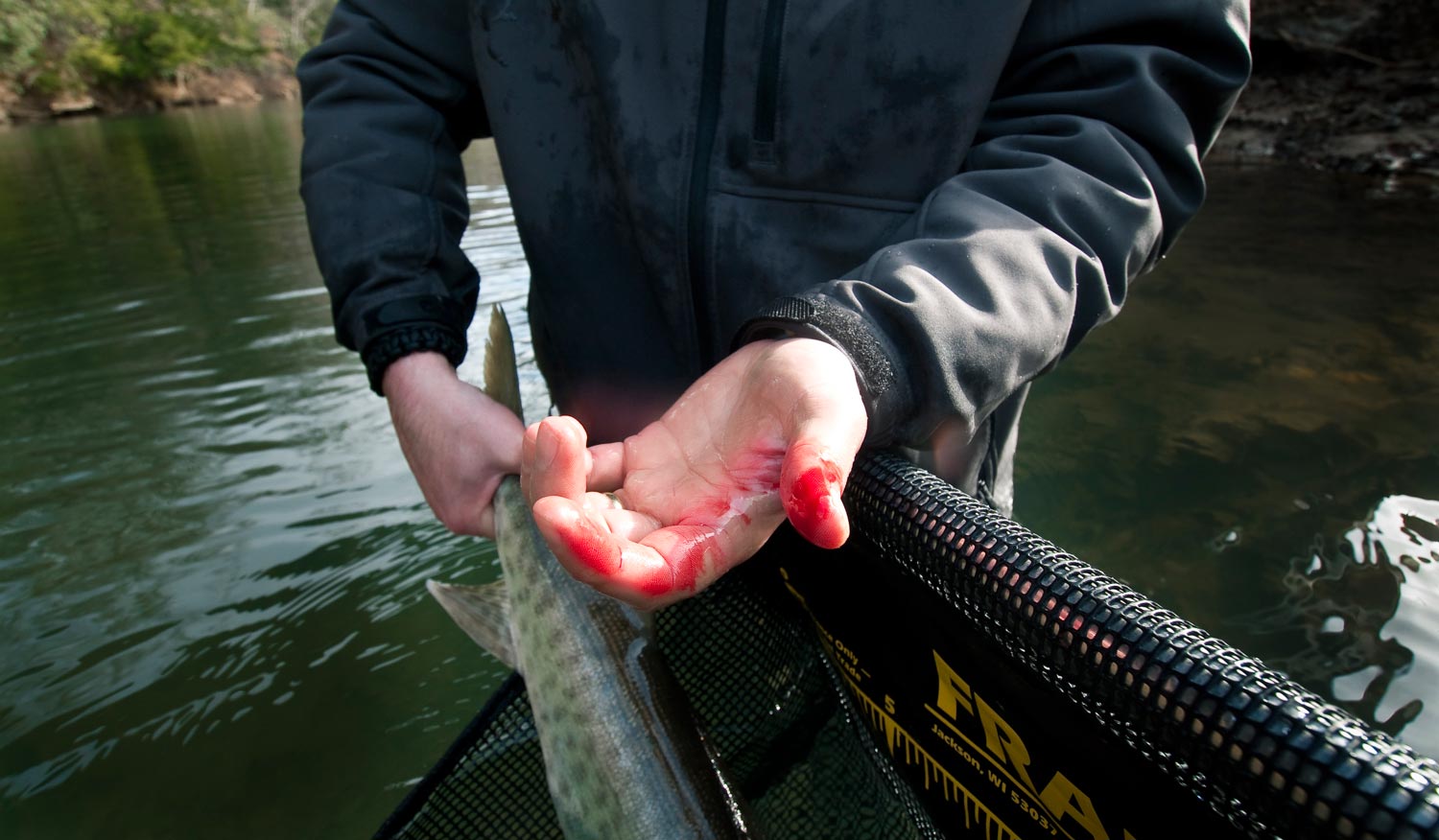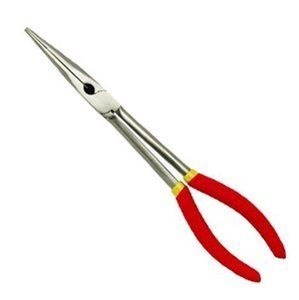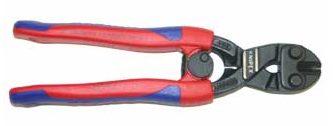I’ll never forget the first musky I landed on fly.
It was an extremely proud moment for me, but it quickly turned into a stressful situation after I got the musky to the boat. I had serious problems removing the deeply hooked fly. The musky had its mouth slammed shut and would not open it more than a couple seconds at a time. After a few minutes, without making any progress, I became desperate and used my hand to pry the mouth open (dumb I know, but the health of the fish was more important to me), and I ended up badly cutting my hand on the razor sharp teeth. The entire hook removal process took far too long and that made it extremely difficult for us to revive and release the fish. It was an organized team effort to say the least. I held the fish in the water, Louis stabilized the net, and Murphy ran the trolling motor upstream to keep water running over the gills, until we got the musky green again. Talk about a bummer that ended up overshadowing a proud angling moment. That’s not how I wanted my first catch and release of a musky to go down.
If you’re planning on going fly fishing for musky or any other toothy critters for the first time, I highly encourage you to read over these organized catch and release handling tips and gear recommendations. They’ll keep you and the fish safe, and you’ll greatly decrease the chances of ruining a great moment on the water like I did.
Proper Musky Handling and Gear
Musky aren’t as tough as most people think. Yeah, their big fish and they look tough with all those teeth, but their large size and wealth of muscle make them very susceptible to mortality from lactic acid build up during the fight. When you catch a musky, you always want to try to keep the fish in the net and in the water at all times. You want to net the fish, remove the hook (while keeping the fish in the water) and release it unharmed as quickly as possible. By keeping the fish in the water you’ll find the fish will stay much calmer than out of the water. The only time you should take the fish out of the water is for a quick photo. You should then immediately put it back in the water and hold onto it, and keep it upright until it’s sufficiently revived.
Forget the Cradle Get a Big Net
One of the most valuable pieces of gear to have on hand when fishing for toothy critters is a quality net. A lot of musky fisherman like to use cradles, but I don’t like them because they require a second angler in the boat to use them. You also have to get the musky much closer to the boat before you can use a cradle. I also found out that cradles have a learning curve, and can be quite hard to figure out if you’ve landed fish your entire life with nets.
Not all nets are created equal. For musky and other large game fish, you want a heavy duty net that has a long handle and is wide and deep. For the safety of the fish you also want to use a net that’s fish safe. It should be knotless and be a coated nylon to help prevent harming the fish and preventing the snag of hooks. The Beckman Big Fish Net and Frabill Conservation Series Net are two popular models that provide the above features. A net with a long enough handle and deep enough basket will allow you to keep the fish and the net in the water during the entire hook removal process.
Suggested Musky Hook Removal Products
The main reason I had so much trouble removing the hook on my first musky was because I didn’t have the proper hook removal gear with me on the boat. Somehow we managed to leave our heavy duty long handled pliers on my buddies other boat at the house. Veteran musky fisherman usually carry two or three hook removal devices with them at all times. Below are a few that are very popular in the industry.
11″ Heavy Duty Needle Nose Pliers
The Hook Pick “Hookout”
The “hook pick” by Tyrant Tackle is 15″ long and works great for removing deeply hooked fish from a safe distance.
A jaw spreader is an inexpensive tool to have on hand when you have a fish hooked deep and it’s not wanting to keep its mouth open.
Knipex Hook Cutter
Every once in a while the only way to get a hook out of a fish is to cut the hook off. Knipex makes a great pair of spring loaded hook cutters that will easily cut through heavy duty hooks. When using them, you’ll want to cut the hook/hooks, remove the fly and then go back in to remove the pieces of hook.
Protective Gloves for Toothy Fish
It’s never a bad idea to wear a pair of protective fishing gloves when handling fish with razor sharp teeth and gills. There’s several different models of puncture proof/resistant gloves out there you can buy. I even found gloves on the web called HexArmor that are guaranteed to stop needles and knives.
That’s my list of tips and gear that anglers should consider if they want to get serious about chasing toothy critters on the fly. I wish I would have run across an article like this before I went on my first trip. It would have been a whole more prepared.
Keep it Reel,
Kent Klewein Gink & Gasoline www.ginkandgasoline.com hookups@ginkandgasoline.com Sign Up For Our Weekly Newsletter!







Whoa! That list of gear looks like a sales ad from a hardware store! The gear suits the quarry though…. that’s one helluva a toothy adversary.
Justin,
It does a little bit doesn’t it 🙂 ha ha.
Kent
Great post and info!!
Joe,
Thanks for the feedback. Its a good primer for Musky and other toothy critters.
Kent
On th egloves- I buy those mechanics gloves at the auto parts store. You can get the NASCAR look baby!
Instead of the net and jaw spreaders, I use a boga grip, the fish doesn’t leave the water. A small amount of pressure on the bottom lips with the grip will open them up.
Barbless hooks make it super easy.
John,
Yes it makes it easier but I still wouldn’t rule out having at least some of these items on hand also.
Kent
Jaw spreader and long pliers are a must for sure.
All i gotta say is i moved 13 fish yesterday. Hooked 2 over 40 inches and 1 of those was close to 50 inches. I caught ZERO…..it was awesomely BAD and that is why I love musky.
Wish I would have been there with you. Sounds like a crazy day of musky fishing.
Kent
Charlie Murphy is the Musky Man!
I like to tie off my Boga Grip to the boat. That way you don’t loose your boga and you can set it up on a D snap ring to the paracord loop to un-hook from boat if needed to change boats or for pictures. I throw the bogs and the fish off the side of the boat into the water..I do the same for Steelhead,Salmon and Trout C&R..
Clint
I haven’t found any gloves that a Musky can’t bite through except for the ones that are so thick that you can’t handle the fish with! I prefer the Boga Grip also, but I do put the fish in a net first. I have landed 150 to 200 Muskies on the fly for 20 years straight now, the biggie with a net is – Muskies have no reverse, so a medium sized hoop with a long bag is best, once the fish settles down you can Boga him and then the fish is easier to handle. Smaller fish are the ones that thrash and bite the most, they also tear up your flies and hands the most, the big girls have probably been handled before, they know the score and just let you get the hook out with less trouble. They seem to know you’ll let them go once you have the “grip & grins” out of the way. I usually don’t have any trouble reviving almost all the fish we hook, they are usually fine if they give you a little bath as they take off – kind of a farewell gesture, they don’t have fingers!
HexArmor will keep u bite free. They r working on a fishing specific glove for the 2014 campaign.
I have been in contact with Hx Armor, unfortunately they don’t have any gloves that will do the trick without being too bulky – making fish handling very difficult. As i stated, it’s the little ones – 32 to 42 inches that are the problem, the larger fish seem to settle down faster and rarely bite you.
No musky here in Ireland, unfortunately but we do have a healthy population of pike. I prefer the plastic lippa grippas. The jaws are rounded and don’t quit touch. I think they’re a little friendlier on the jaws than bogas and with no scales there’s no temptation to suspend the fish by the jaw to weigh it. I have a fish friendly glove for grabbing the tail wrist and grip the jaws to control the fish horizontally. I’m often waist deep so if I can keep those teeth away from my tender bits I’m happy 😉 the lippas come included with a coil lanyard so easy to clip onto my waders belt. No financial interest just a good product.
Enjoying the blog guys. At the airport on my way to Portugal for a non fishing family holiday and catching up on your week!
Great read, so good to see people educating others how to safely handle Musky and Pike!
Derek,
Glad you agree that it’s an important subject.
Kent
Kent, when I saw the picture associated with this blog, I thought (as a former owner of Lindy-Little Joe Tackle Company and its Chairman at the time of its sale to PRADCO) wow this calls for the Lindy Fish Handling Glove! Sure enough, you included it in your article. I would like to add some information relating to this glove. It is constructed with three layers of Super Fabric, developed for surgeons to prevent cuts and punctures. I would demo the glove at the national AFTMA and I-CAST fishing shows. We had a board with 50-60 six penny finish nails protruding through one side in a the shape of a small bass. People were invited to place their hand on the “bed” of sharp nails and then do the same while wearing the Lindy Fish Handling Glove. Virtually all would only place their hand very gingerly on the nails, with or without the glove on. So I would put the glove on my right hand and literally pound the palm of my hand against the nails, remove the glove to show that there were no marks on my hand and then casually mention that I was a practicing right-handed dentist! I have personally “lipped’ Northern Pike up to 44 inches without punctures or penetration. In August of 2014 I will be fly fishing for Northern Pike at Inconnu Lodge in the Yukon Territory. I plan on bringing my Lindy Fish Handling Gloves! BTW, I am not shilling for Lindy Tackle as I have absolutely no involvement with the company since we sold it in 2008. In fact, I fly fish more often than I spin fish these days. Hope this helps those who might be looking at gloves
Great to hear from you Dr. Roland
Thank you for giving us your personal feedback on the performance of those gloves.
Kent
I have caught a few small skies but am chasing some big girls in Brainerd in a couple weeks. What is the safest way to get a hand on the gill plate? (Or the lower jaw slot to be specific) Im a life long C&R guy and wouldnt dream of handling fish by the gills, but I see scores of photos and videos of anglers doing this with musky. Arent there some sharp areas around the gill plate to avoid?
Jay, I still prefer the Boga Grip, it does not put your hands in harms way and keeps the fish safer by not getting your fingers or hands into his gills, which would be lethal, like someone putting his hands in your lungs – think about that when you want to hang onto his gill plates. I do not recommend hanging the fish by the Boga, but it makes handling the fish much easier, especially for those anglers unfamiliar with proper handling techniques. If used properly the Boga Grip is probably the safest way to handle these toothy fish because it keeps you hands away from some sensitive parts of the fish and keeps the angler safe.